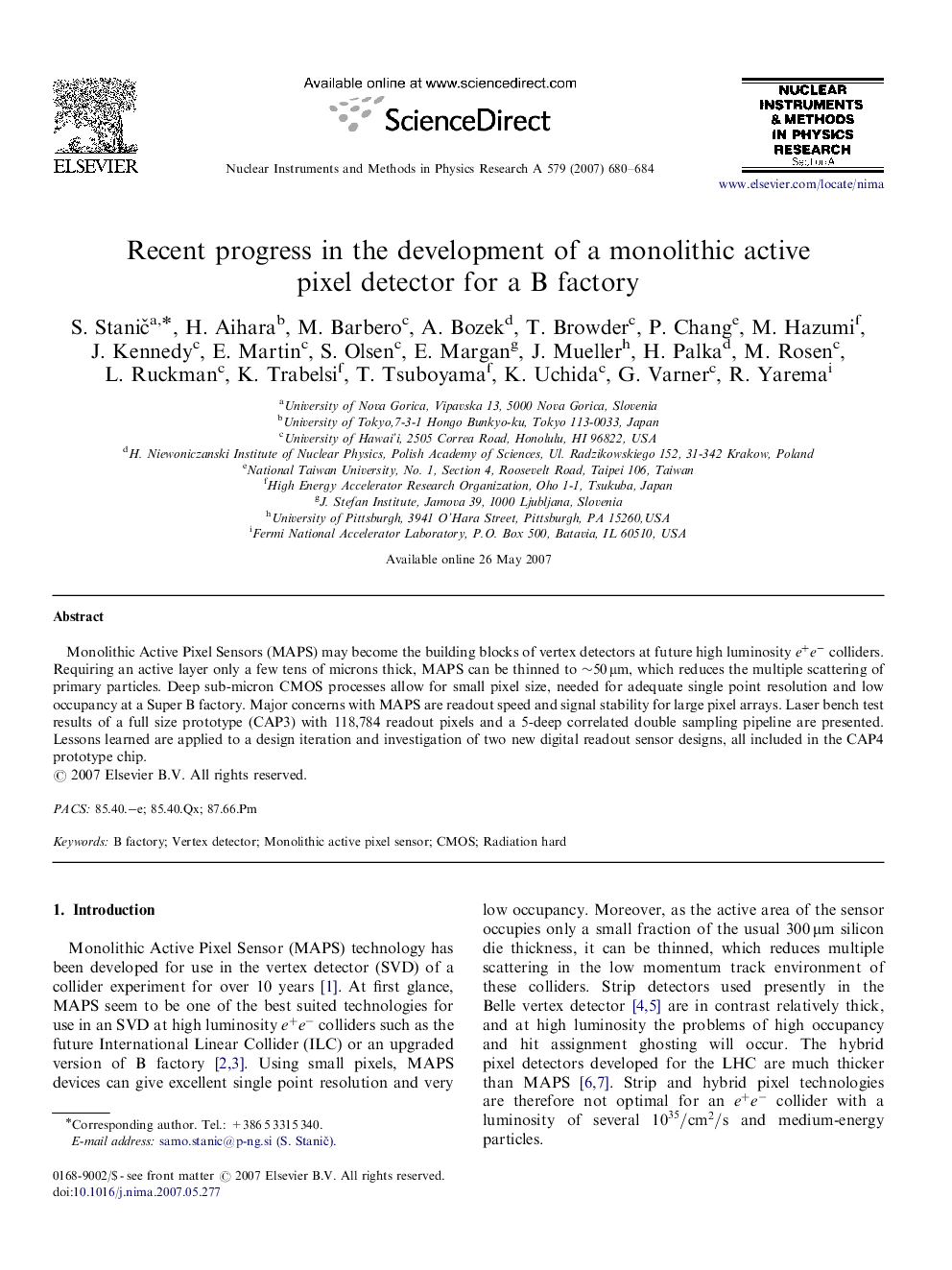| کد مقاله | کد نشریه | سال انتشار | مقاله انگلیسی | نسخه تمام متن |
|---|---|---|---|---|
| 1830042 | 1027471 | 2007 | 5 صفحه PDF | دانلود رایگان |

Monolithic Active Pixel Sensors (MAPS) may become the building blocks of vertex detectors at future high luminosity e+e-e+e- colliders. Requiring an active layer only a few tens of microns thick, MAPS can be thinned to ∼50μm, which reduces the multiple scattering of primary particles. Deep sub-micron CMOS processes allow for small pixel size, needed for adequate single point resolution and low occupancy at a Super B factory. Major concerns with MAPS are readout speed and signal stability for large pixel arrays. Laser bench test results of a full size prototype (CAP3) with 118,784 readout pixels and a 5-deep correlated double sampling pipeline are presented. Lessons learned are applied to a design iteration and investigation of two new digital readout sensor designs, all included in the CAP4 prototype chip.
Journal: Nuclear Instruments and Methods in Physics Research Section A: Accelerators, Spectrometers, Detectors and Associated Equipment - Volume 579, Issue 2, 1 September 2007, Pages 680–684